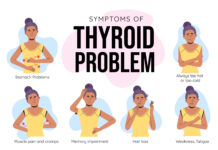c. Several vital organs like heart and lungs ensure the functioning of our body and it is quite impossible to know what all goes inside these organs unless their activity is affected especially when something like a blood clot occurs. Blood clots can be particularly life-threatening when happening in the most crucial human organ, the heart.
A blood clot is a lump of blood that takes a gel-like or semi-solid state. While clotting of blood becomes an important process that prevents the person from losing blood in instances of cuts or injury; it can be severely dangerous when a clot forms inside the veins and does not always dissolve on its own.

Important Announcement – EasyShiksha has now started Online Internship Program “Ab India Sikhega Ghar Se”

Top Courses in Virtual Reality
More Courses With Certification
A blood clot generally presents with swelling, pain, redness of skin or discoloration, higher heartbeat, coughing or breathing issues depending on where the clot has developed.
TYPES
The human circulatory system comprises vessels called arteries (vessels which carry blood from the heart) arteries and veins (vessels which carry blood away from the heart) that are responsible for blood transportation through the body. Blood clots can form in arteries or even in the veins.
A blood clot forming in an artery is called an arterial clot. It is accompanied by severe pain, paralysis of parts of the body, a heart attack or a stroke and requires immediate emergency treatment.
Another type of blood clot is called venous clot when a clot occurs in a vein. Such clots generally build up slowly over time but can still be life-threatening. When a clot occurs in one of the major veins deep inside the body, it is called deep vein thrombosis (DVT). It usually occurs in the lower leg.
Top Courses in Software Engineering
A DVT can lead to pulmonary embolism (PE). PE usually occurs when a blood clot formed in the leg travels upwards the right heart towards and eventually blocks a blood vessel supplying the lungs (pulmonary arteries). When a blood vessel is blocked, it reduces the levels of oxygen in the blood. This can severely damage the lungs, the heart, other organs and even cause right heart failure.
Those who are affected by DVT, are more at the risk of PE and must get diagnosed timely and properly. DVT and PE are forms of Venous thromboembolism (VTE) which refers to the formation of blood clots in the veins.
Some of the symptoms to be looked out for include:
· Heaviness, tightness, severe pressure or pain in the chest which might worsen with a deep breath
· Paced up heartbeat
· Lightheadedness or fainting
· Sudden cough or coughing up blood
· Excess of sweating
· Difficulty in breathing
· Shortness of breath
· Discomfort in jaws, neck, arms
· Anxiety
· Nausea
Top Courses in Quality Management System
Top Courses in Project Management
Some of these symptoms are similar to a heart attack symptoms. A heart attack occurs when a blood clot blocks the blood flow in the heart causing a cardiac muscle to die. However, when the blood clot is not of considerable size, it may not show any of the above major symptoms but could still be dangerous and therefore diagnosis and awareness about your condition is key.
RISK FACTORS
A person is likely to get a blood clot in leg veins after prolonged immobility like bone breaks or a muscle is pulled badly such as by severe trauma like in a car accident. Sometimes a clot can happen without a necessary reason too and the person might not even realize. Other possibilities include:
· While one is recovering from a surgery or had an extremely long sitting in a flight or a wheelchair over many hours without any movement
· Obese person, someone with diabetes or high cholesterol
· Hip or knee replacement
· Cancer or cancer treatments
· Usage of birth control methods that contain estrogen such as the pill, patch or ring
· Pregnancy; the six weeks after the baby’s birth
· A family history of blood clots
 Online Courses with Certification
Online Courses with CertificationTop Courses in Personal Development
Top Courses in Networking
TREATING A CLOT IN THE HEART
Usually, medication can help in treating the clot. The doctor is likely to use blood-thinning medication or anticoagulants to limit the growth of the blood clot. Based on the size of the blood clot as well as its location, further treatment or therapy could be required. Medications could still be advised to prevent any complications further. In rare cases, however, medicines are not sufficient to remove the clot and a surgical procedure might be required. Surgery can be done by inserting a catheter into vein, mostly in the leg, until it reaches the blood clot. The surgeon can then break up the clot and remove it.
Blood clots can be prevented and better treated if a person is aware of the risk and recognizes the signs, reaching out for timely medical help. Maintaining a healthy weight along with a healthy lifestyle habits that have sufficient physical activity and not involve smoking, also reduces the chances of developing a blood clot.
Empower your team. Lead the industry
Get a subscription to a library of online courses and digital learning tools for your organization with EasyShiksha
Request NowQ. Are EasyShiksha's internships truly free?
Yes, all internships offered by EasyShiksha are completely free of charge.
Q. How can I apply for an internship with EasyShiksha?
You can apply by visiting our website, browsing available internships, and following the application instructions provided.
Q. What types of internships are available through EasyShiksha?
EasyShiksha offers a wide range of internships across technology, business, marketing, healthcare, and more. Opportunities are continuously updated.
Q. Will I receive a certificate upon completing an internship?
Yes, upon successful completion, you will receive a certificate recognizing your participation and achievements.
Q. Are EasyShiksha's internship certificates recognized by universities and employers?
Yes, the certificates are recognized by universities, colleges, and employers worldwide.
Q. Is the download of certificates free or paid?
Access to internships and courses is free, but there is a small fee to download certificates, covering administrative costs.
Q. When can I start the course?
You can choose any course and start immediately without delay.
Q. What are the course and session timings?
These are fully online courses. You can learn at any time and pace. We recommend following a routine, but it depends on your schedule.
Q. What will happen when my course is over?
After completion, you will have lifetime access to the course for future reference.
Q. Can I download the notes and study material?
Yes, you can access and download course materials and have lifetime access for future reference.
Q. What software/tools would be needed for the course?
All necessary software/tools will be shared during the training as needed.
Q. I’m unable to make a payment. What should I do?
Try using a different card or account. If the problem persists, email us at info@easyshiksha.com.
Q. Do I get the certificate in hard copy?
No, only a soft copy is provided, which can be downloaded and printed if required.
Q. The payment got deducted but shows “failed”. What to do?
Technical errors may cause this. The deducted amount will be returned to your account in 7-10 working days.
Q. Payment was successful but dashboard shows ‘Buy Now’?
Sometimes payment reflection is delayed. If it takes longer than 30 minutes, email info@easyshiksha.com with the payment screenshot.
Q. What is the refund policy?
If you face technical issues, you can request a refund. No refunds are issued once the certificate has been generated.
Q. Can I enroll in a single course?
Yes, select the course of interest, fill in the details, make payment, and start learning. You will also earn a certificate.
Q. My questions are not listed above. I need further help.
Contact us at info@easyshiksha.com for further assistance.
ALSO READ: india’s book of dreams i dream addressed to the honorable president of india
Get Course: fundamentals of six sigma














































































